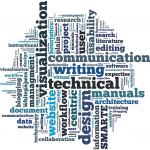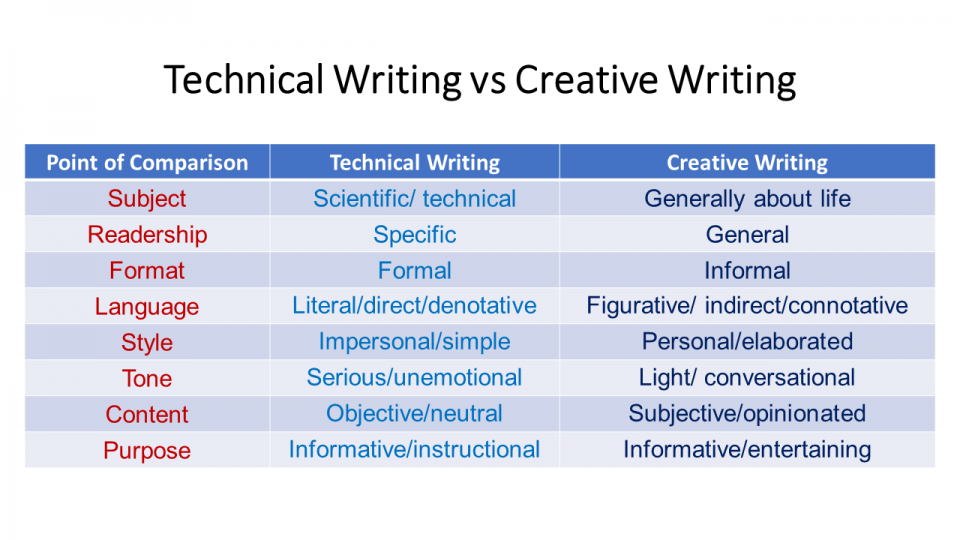 My dear technical communicators, welcome to our first lesson, the Nature of Technical Communication! This post is especially made for you as my humble effort to extend the limited classroom size and class contact hours. Hence, you can study on your own pace and in your own most convenient time and place. However, this does not mean that our regular class meetings will be superseded and replaced. You are still required to attend our regular classes, okay? So, here we go!
My dear technical communicators, welcome to our first lesson, the Nature of Technical Communication! This post is especially made for you as my humble effort to extend the limited classroom size and class contact hours. Hence, you can study on your own pace and in your own most convenient time and place. However, this does not mean that our regular class meetings will be superseded and replaced. You are still required to attend our regular classes, okay? So, here we go!
Intended Learning Outcomes (ILOs)
At the end of this topic, you should be able to:
- Define what is technical communication and technical writing.
- Explain the nature of technical communication and technical writing.
- Differentiate technical report writing and creative writing.
- Elaborate the functions and characteristics of technical communication and technical writing.
The Nature of Technical Communication
Technical Communication is part of the vast field of communication. As future professionals, you are expected to become expert communicators in your own field of expertise. Your expertise and specializations require a great deal of sharing your findings, discovery, and research. As such, you have to wield a considerable mastery of communication and its nuances.
The term communication is derived from the Greek word “komunikare” which translates as “to share” in English. Hence, communication has a lot of “sharings” taking place between the sender and the receivers. It was also derived from the Latin word “comunis” which translates as “to make common” in English. Therefore, combining these two root words, as sharing of knowledge, ideas, thoughts and information take place, awareness and understanding is being made common to all participants and that’s when they start making progress and move forward.
Individual authors and experts have their own definition of communication. The simplest definition of communication is the transfer of ideas from one to another. This simplicity has its drawback as it encompass all forms of communication ranging from machine, animal, and human communication. It is important that we narrow our study down into human communication, verbal communication which involves the use of words in written and spoken communication. However, we need to note that there is creative, artistic and literary use of words to communicate and this is not our concern here. Our business is on technical, scientific, and formal ways of communication. This is technical communication.
Technical communication has a lot of definitions depending on the context where it comes from. It is widely used in areas ranging from military, medicine, biotechnology, engineering, architecture, business, economy, diplomacy, law, and education among others. One textbook defines it as:
“the process of making and sharing information and ideas in the workplace” ~ (Markel, 2012)
and another as:
“a process of managing technical information in ways that allow people to take action” ~ (Johnson-Sheehan, 2012)
we may be confused as to what specific context we have to work into. Therefore, it is important to have a defintion which is simple and which serves as our common ground in our academic context. As such we will use a simple and easy to digest definition. Technical communication is the exchange of information that helps people interact with technology and solve complex problems. To interact with technology in so many ways, we need information that is not only technically accurate but also easy to understand and use.
Purposes of Technical Communication
The output or product of technical communication comes in various shapes and forms depending on the purpose and these are called technical document or technical artifact. Technical communication serves three purposes that sometimes overlap:
- To inform. This specifically answer the question “What?”. Brochures, leaflets, flyers, labels, etc., serve this purpose by anticipating and answering the readers’ questions.
- To instruct. This specifically answer the question “How?”. Instruction or user manuals, recipe books, manual of procedures, flowcharts, etc., serve this purpose by enabling the readers to perform certain tasks.
- To persuade. This specifically answer the question “Why?”. By presenting facts, data, figures and statistics backed by technical and scientific experiments and procedures convince and motivate your readers that what they are reading is not just opinion or assumptions. Therefore, confidence and trust is built which is essential in technical communication.
Features of Technical Communication
Think about the types of Technical Communication you have seen. These may be instruction manuals, instructional videos, proposals, or reports. They all work to communicate some type of action to the reader. Instructions work to have the reader complete the actions where proposals are working to have the reader move on some type of proposed action. Over-all, the following are essential features of technical communication.
- Technical Communication is action-oriented.
- Technical Communication uses multiple modes of communication.
- Technical Communication details a certain kind of knowledge.
- Technical Communication occurs in different genres.
- Technical Communication is rhetorical.
- Technical Communication utilizes design elements.
- Technical Communication is user centered.
Direction of Technical Communication
- Upward communication originates from rank and file to the supervisors is usually addressed to mangers and supervisors who are often busy.
- Lateral communication came from peers and addressed to their fellow of the same rank who may share the writer’s expertise in a field.
- Downward communication came from the top management to the subordinates usually addressed to employees and technicians. Usually, the concerns of top management are on how to increase productivity and outputs.
- Outward communication is usually addressed to customers, public interest groups, stockholders, the government and others stakeholders. This goes outside the company which basically informs the bigger public regarding company policies, programs, and initiatives which affect the society.
What is Technical Writing?
You may have noticed how we started with technical communication before tackling technical writing because the term communication refers to much more than just writing. As you will see in this course, the work we analyze and the work we will do are comprised of much more than just writing and move more towards a overall goal of communicating ideas and, more importantly, actions. Technical writing is a kind of writing characterized factual and straightforward style using formal elements to convey specific information involving the use of technology.
Characteristics of Technical Writing
As opposed to creative writing, technical writing has specific characteristics which set it apart and distinct from that of the former. The following are the basic characteristics of technical writing:
- Technical writing is formal and serious. Compared with creative writing which may be informal and funny, technical writing communicates specific information which requires a formal tone and serious disposition.
- Technical writing is impartial and objective. There is no place for opinions, biases and individual judgments in technical writing.
- Technical writing is factual and accurate. The object of technical writing are scientific facts and verified data which may spell destruction of properties and even lives if not being communicated properly.
- Technical writing is practical and powerful. To enable someone to perform specific task which is virtually impossible previously is both practical and empowering. Thanks to technical writing, we can now operate equipment and machinery, use gadgets and appliances, among others.
Technical Writing vs Creative Writing
The table below summarizes the comparative features of technical writing and creative writing. Examine each area and try to analyze the point of similarity and difference. Enjoy learning online!

I am interested in using the image (horizontal and vertical words in blue and black) under the topic “Nature of Technical Communication.” Do you know who I should contact in order to obtain permission to use the image. any information would be appreciated.
Contact me at: [email protected]